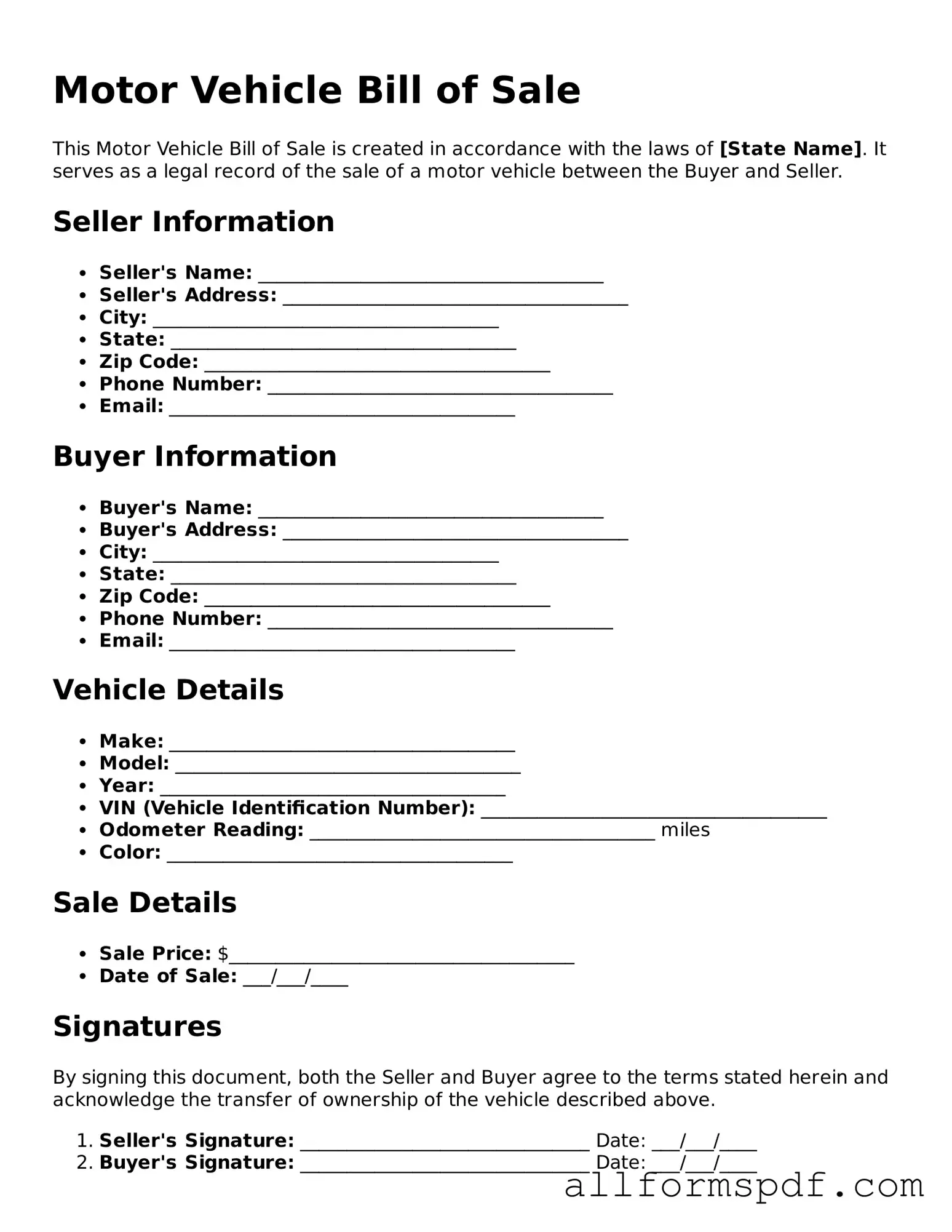Filling out the Motor Vehicle Bill of Sale form correctly is crucial for both buyers and sellers. One common mistake is failing to provide accurate vehicle information. This includes the make, model, year, and VIN (Vehicle Identification Number). Inaccuracies can lead to disputes and complications in transferring ownership.
Another frequent error is neglecting to include the sale price. The sale price is essential for tax purposes and can affect the validity of the transaction. Without this information, the form may be considered incomplete.
Many individuals forget to sign the document. Both the seller and buyer must sign the Bill of Sale to make it legally binding. A missing signature can render the agreement unenforceable.
Some people overlook the importance of including the date of sale. This date is vital for establishing when the ownership transfer occurred. Without it, issues may arise regarding liability and registration.
Incorrectly identifying the buyer and seller is another common mistake. Full names and addresses must be provided to ensure that both parties are clearly identified. Ambiguities can lead to confusion and potential legal issues.
Many individuals fail to provide a clear description of the vehicle's condition. Noting any existing damage or mechanical issues can protect both parties. This transparency helps avoid disputes after the sale.
Another error involves not checking local requirements. Different states have varying laws regarding Bill of Sale forms. Failing to comply with these regulations can lead to problems during the registration process.
Some people neglect to keep copies of the completed form. Both the buyer and seller should retain a copy for their records. This documentation can be crucial in case of future disputes or questions regarding ownership.
Failing to include any liens on the vehicle is a significant oversight. If the vehicle is financed or has outstanding debts, this information must be disclosed. Not doing so can lead to legal repercussions.
Finally, individuals often rush through the form without reading it thoroughly. Taking the time to review the entire document can prevent mistakes and ensure that all necessary information is included. Attention to detail is key in this process.
